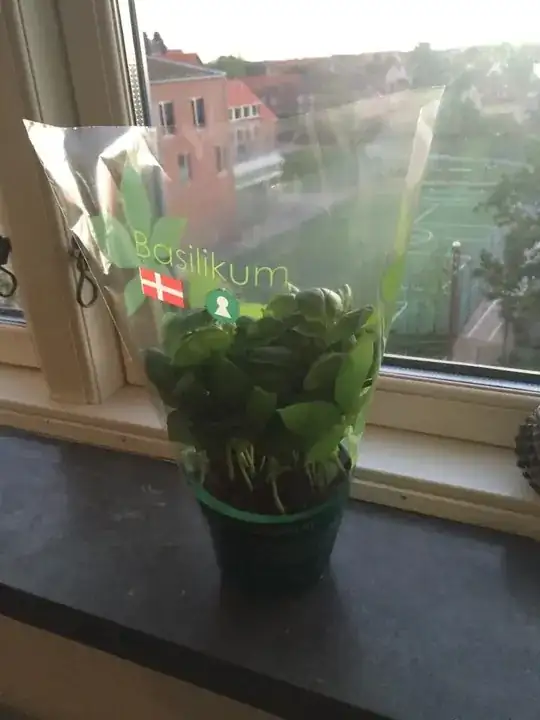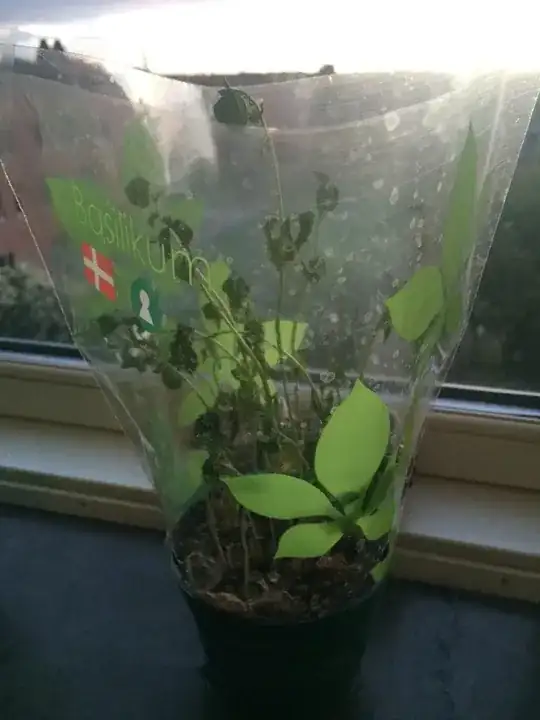The basil sold in these pots are in fact a dozen or so little seedlings grown just long enough to develop a few leaves. The plastic sleeve serves two purposes: Coralling the small plants which would otherwise tend to lean in all directions, getting easily tangled with plants from other pots and thus protecting them from mechanical damage during transport and in the stores. It is simply a packaging, not a "mini-greenhouse".
When you bring one of these pots home, the first thing to do should be to remove the foil. If you leave it on, you encourage damp conditions within that encourage the growth of fungi and are not healthy for your plant.
Next, put your pot in a saucer so that runoff from watering doesn't make a major mess. (You could use a cache pot, but that's purely for decorative purposes.) Within the next few days and weeks, some of the smaller seedlings will die, succumbing to the overcrowded conditions in your pot. Remove all stems that appear shriveled, blackened or "fuzzy".
When harvesting, always pinch the top pair or two of leaves, this encourages new growth as opposed to long, lanky bare stems and it lengthens the time until the plants start to bloom.
Basil will do very well outdoors1 if you transition it slowly - these seedlings are comparatively weak and fragile and need hardening off if you try to do so. You could even remove the whole cluster of plants from the pot and plant them further apart. This should allow the plants to mature better and get way larger that in the pot. But if you just want a few leaves for your kitchen and are little inclined to fuss about your basil, just use it up and get a new one.
1 Note that basil is an annnual and absolutely not frost hardy. So planting or transitioning it outdoors is a spring/summer project, not one for a scandinavian autumn. I added this information for general reference, not for this specific pot.

